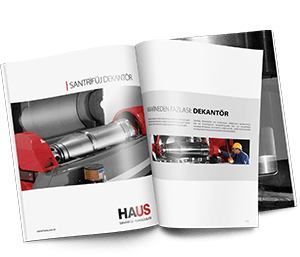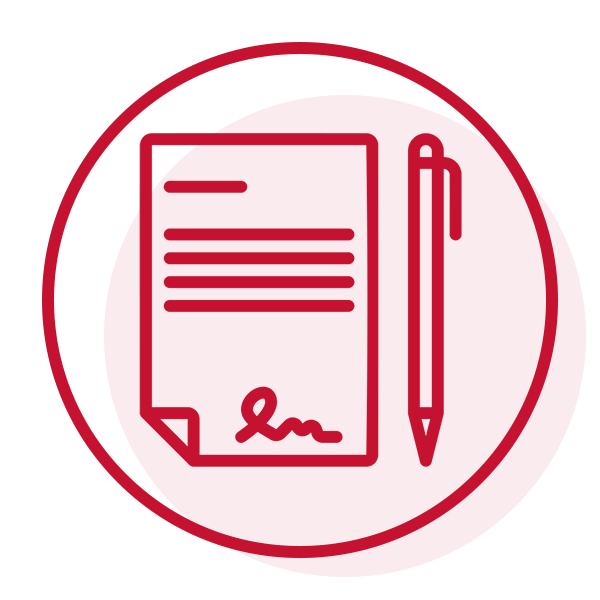Pomace Oil
Pomace stands as a byproduct which has economic return with an oil content of 2-5% in wet pomace, which varies depending on the olive oil production processes. This byproduct is also used as fuel since it also incorporates olive pit. Crushed olive pits found in the pomace are separated with a high separation efficiency in HAUS pomace kernel separation machine; can be used in hot water boilers in olive oil plants, pomace plants and even at domiciles, farms etc. living spaces as an environment friendly solid waste or can be sold for significant revenue to the plant. On the other hand, pomace can also be used as compost or animal feed additive. All of these factors make pomace pressing plants (2nd pressing/repass) profitable for the businesses. Pomace obtained upon olive pressing performed with a yield of 85-90% by HAUS olive pressing plants is subjected to a 2nd pressing to produce raw pomace oil and pomace with and without (fruit meat, skin) kernel as byproduct. HAUS becomes the solution partner of customers operating at different capacities with high efficiency (40-45%) continuous pomace pressing plants and reliable after sales service concept relying on its experience in excess of 65 years dating back to the history of the olive oil sector. Thus, extraction of 95% of the oil content in the olives is possible with HAUS Centrifuge Technologies continuous system olive oil production and pomace oil production plants.
While the raw pomace oil obtained upon pomace pressing means the oil which is not subjected to extraction of pomace using solvents or reesterification performed through other physical processes, not blended with other oils and mixtures, not fit for direct consumption and is suitable for refining or technical use; the businesses can achieve significant economic gains and increase their profitability with this raw pomace oil.
HAUS offers differentiated solutions on basis of country as a global brand for pomace pressing plants. For instance, while it can install 3-phase pomace pressing plants to countries located in the Northern Africa such as Morocco, Tunisia and Algeria etc.; it can offer 2-phase pomace pressing solutions to the regions such as Spain and Italy where 2-phase pressing is carried out. On the other hand, it offers conversion service to the customers which would like to transform their current 3-phase plants to 2-phase system for keeping up with the technology.
Pomace quantity produced during olive oil quantity is directly proportional with the water content of pomace. While in two-phase process the pomace contains the juice of the olive, a certain part of the juice of the olive is left in the black water in case of three-phase process. This leads to variation in the water content of the pomace and therefore a difference in total pomace quantity. HAUS pomace pressing plants are designed both to press the pomace delivered from the olive line in a continuous manner and to press the pomace stored in tanks/silos etc. in batches.
Process Operation
Pomace stands as a byproduct which has economic return with an oil content of 2-5% in wet pomace, which varies depending on the olive oil production processes. This byproduct is also used as fuel since it also incorporates olive pit. Crushed olive pits found in the pomace are separated with a high separation efficiency in HAUS pomace kernel separation machine; can be used in hot water boilers in olive oil plants, pomace plants and even at domiciles, farms etc. living spaces as an environment friendly solid waste or can be sold for significant revenue to the plant. On the other hand, pomace can also be used as compost or animal feed additive. All of these factors make pomace pressing plants (2nd pressing/repass) profitable for the businesses. Pomace obtained upon olive pressing performed with a yield of 85-90% by HAUS olive pressing plants is subjected to a 2nd pressing to produce raw pomace oil and pomace with and without (fruit meat, skin) kernel as byproduct. HAUS becomes the solution partner of customers operating at different capacities with high efficiency (40-45%) continuous pomace pressing plants and reliable after sales service concept relying on its experience in excess of 65 years dating back to the history of the olive oil sector. Thus, extraction of 95% of the oil content in the olives is possible with HAUS Centrifuge Technologies continuous system olive oil production and pomace oil production plants.
While the raw pomace oil obtained upon pomace pressing means the oil which is not subjected to extraction of pomace using solvents or reesterification performed through other physical processes, not blended with other oils and mixtures, not fit for direct consumption and is suitable for refining or technical use; the businesses can achieve significant economic gains and increase their profitability with this raw pomace oil.
HAUS offers differentiated solutions on basis of country as a global brand for pomace pressing plants. For instance, while it can install 3-phase pomace pressing plants to countries located in the Northern Africa such as Morocco, Tunisia and Algeria etc.; it can offer 2-phase pomace pressing solutions to the regions such as Spain and Italy where 2-phase pressing is carried out. On the other hand, it offers conversion service to the customers which would like to transform their current 3-phase plants to 2-phase system for keeping up with the technology.
Pomace quantity produced during olive oil quantity is directly proportional with the water content of pomace. While in two-phase process the pomace contains the juice of the olive, a certain part of the juice of the olive is left in the black water in case of three-phase process. This leads to variation in the water content of the pomace and therefore a difference in total pomace quantity. HAUS pomace pressing plants are designed both to press the pomace delivered from the olive line in a continuous manner and to press the pomace stored in tanks/silos etc. in batches.
Process Operation
The pomace consists of the remaining kernels, skins and pulp upon pressing of olives in the olive oil plants. Pomace of different structures is obtained depending on the production performed by the olive oil factories which operate either on the conventional pressing method, 3-phase process and 2-phase process. Such three pomace types are distinguished from each other due to their moisture content of 25-30%, 45-55% and 60-80%, respectively.
Pomace obtained from olive oil plants has a moisture content of approximately 45-80% depending on the production processes. Oil extraction from pomace is performed in 2 ways as physical and chemical processes. In the chemical process, in order to extract oil content of pomace at maximum level the pomace needs to be dried by solvent. Since the pomace delivered to the pomace plant has a high moisture content (particularly in case of 2-phase process), then a significant part of its oil content is extracted by the help of hexane. Oil content of the pomace varies depending on the strain of olive, cultured region, cultivation technical and olive oil production process. In addition to the chemical extraction, pomace oil can be obtained also by performed 2nd pressing using decanter as a physical method.
Pomace oil obtained through physical method is of higher quality than pomace oil obtained by use of hexane. It is also possible to obtain food grade pomace oil if 2nd pressing is performed physically by use of decanter to press the recently produced pomace upon olive pressing without delay. Pomace pumped from the olive pressing line or the tank/silo etc. storage structure is firstly run through kernel separator, and 60% of the kernel content is removed with the unit which has a mesh size of 6 mm at this stage. The purpose of not removing the kernel content completely is to improve efficiency of extraction. Pomace which is separated from kernel is taken to the malaxator and kneaded there for the period required for the paste and then pumped to the decanter where solid-liquid separation will be performed. The decanter separates the oil and the oil-free pomace. Obtained raw pomace oil is transferred to the separator where liquid-liquid separation will occur in order to eliminate the sediments of oil and certain amount of water content. Upon this process it is transferred to the oil filtration or storage unit depending on the preference of the plant.

Pomace oil obtained through physical method is of higher quality than pomace oil obtained by use of hexane. It is also possible to obtain food grade pomace oil if 2nd pressing is performed physically by use of decanter to press the recently produced pomace upon olive pressing without delay. Pomace pumped from the olive pressing line or the tank/silo etc. storage structure is firstly run through kernel separator, and 60% of the kernel content is removed with the unit which has a mesh size of 6 mm at this stage. The purpose of not removing the kernel content completely is to improve efficiency of extraction. Pomace which is separated from kernel is taken to the malaxator and kneaded there for the period required for the paste and then pumped to the decanter where solid-liquid separation will be performed. The decanter separates the oil and the oil-free pomace. Obtained raw pomace oil is transferred to the separator where liquid-liquid separation will occur in order to eliminate the sediments of oil and certain amount of water content. Upon this process it is transferred to the oil filtration or storage unit depending on the preference of the plant.

Pomace oil in 2-phase process, pomace and pomace oil are obtained; in 3-phase pomace oil process is obtained pomace oil, black water and pomace. The 3-phase process has several differences from the 2-phase process. Water is added to the decanter in the feeding stage of the pomace kneaded in the malaxer. This water emerges as blackwater after squeezing in 3-phase decanter and the pollution rate of black water is high. The resulting pomace has a lower moisture content and is therefore easy to store. Water should be added during the separation of the core. The enterprises aim to reduce the amount of black water to be obtained as well as the amount of water added by supplying the land water to the system. In our country, although the pomace plants are working in 3 phases, the amount of water used, the amount of black water to be disposed of (high pollution load), the impact on the environment, the importance of 2-phase pomace squeeze is increasing in terms of sustainability.


PRODUCTS OF THE APPLICATION
You May Also Be Interested
HAUS
How Can We Help You?
#BECAUSEWECARE








